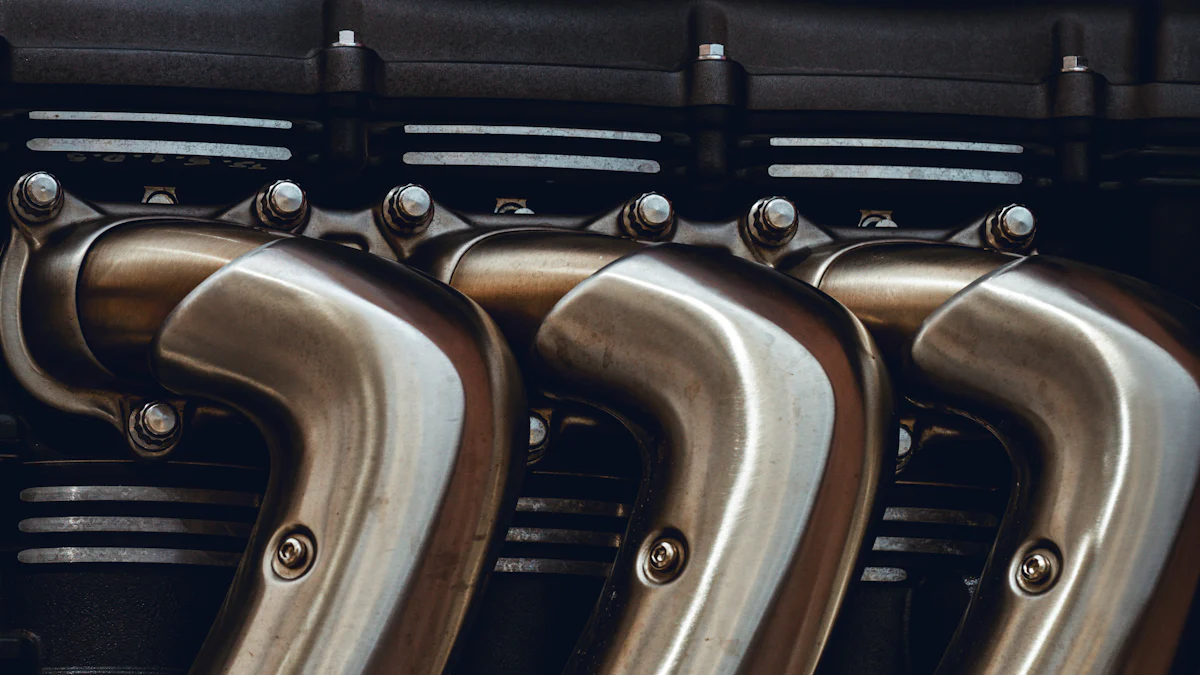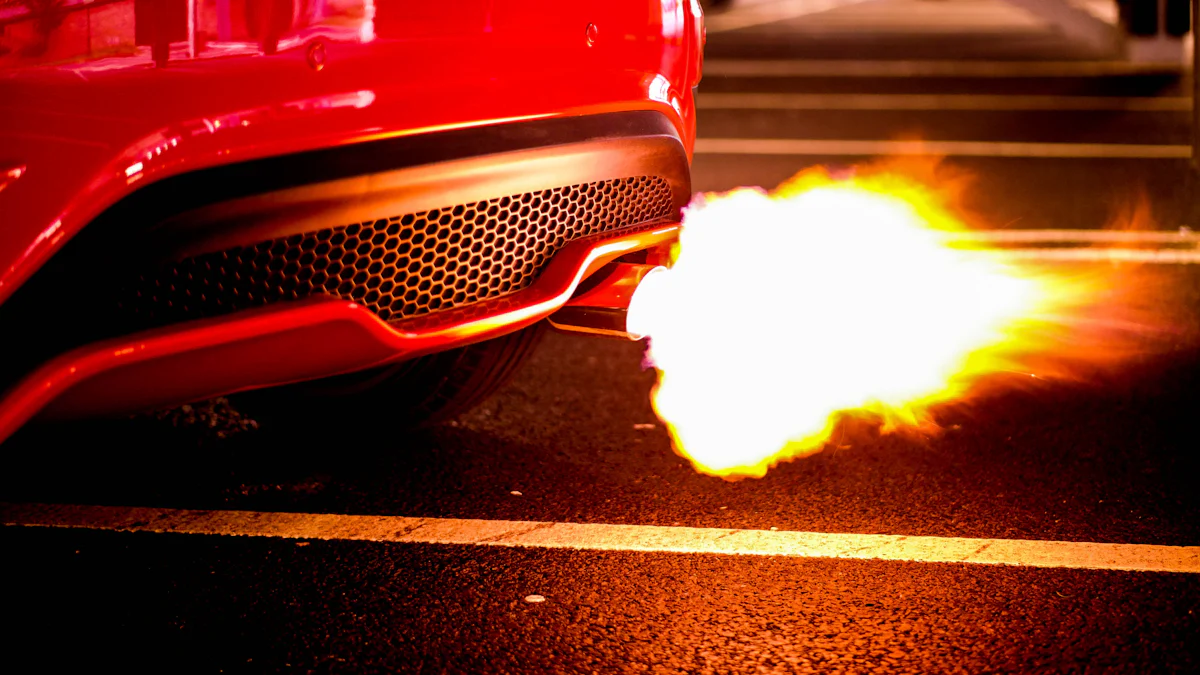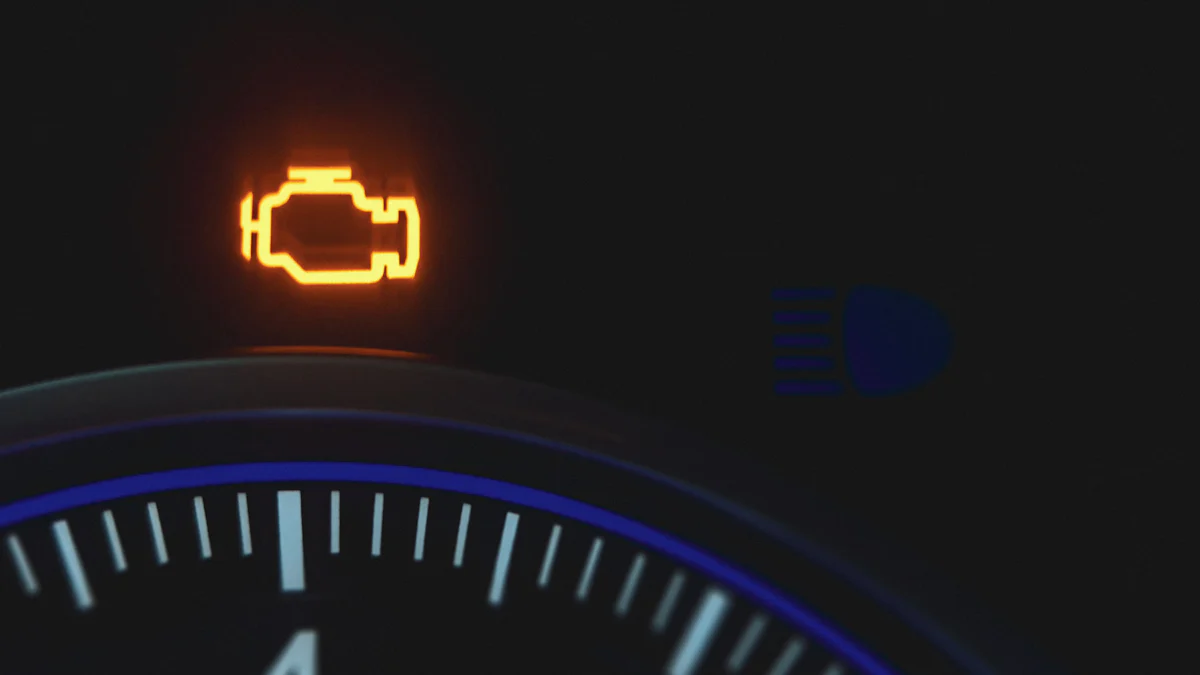
When the engine exhaust manifold starts glowing red at idle, it’s not just a visual spectacle; it’s a warning sign of potential trouble brewing under the hood. The intense heat indicates a serious issue that demands immediate attention to prevent further damage. In this blog, we will delve into the causes behind this alarming phenomenon, explore effective diagnostic methods, discuss practical solutions, and emphasize the critical role of maintaining a healthy exhaust system for your vehicle’s overall performance and longevity.
At Werkwell, a leading company in the industry offering OEM/ODM services for customers, we understand the importance of addressing issues like exhaust manifold glowing red at idle promptly to ensure the smooth operation of your vehicle. With a strong focus on high-quality products at economical prices, Werkwell is dedicated to providing fast delivery and customization options to meet customers’ unique requirements. Contact us today for inquiries about our products or price list, and our team will get back to you within 24 hours.
Causes of a Glowing Exhaust Manifold

When an exhaust manifold begins to glow red at idle, it serves as a visual indicator of underlying issues within the vehicle’s engine system. Understanding the causes behind this phenomenon is crucial for maintaining optimal engine performance and preventing potential damage. Let’s explore the common factors that can lead to a glowing exhaust manifold:
Common Causes
Rich Fuel Mixture
A rich fuel mixture, characterized by an excess of fuel compared to air in the combustion process, can contribute to the exhaust manifold glowing red. The unburned fuel ignites in the manifold, generating intense heat and causing it to glow.
Lean Fuel Mixture
Conversely, a lean fuel mixture with insufficient fuel relative to air can also result in a glowing exhaust manifold. In this scenario, the lack of adequate fuel leads to high combustion temperatures, causing parts of the exhaust system to heat up significantly.
Ignition Timing Issues
Issues with ignition timing, such as delayed spark or misfiring cylinders, can play a role in causing the exhaust manifold to glow red. When the combustion process is not synchronized correctly, excess heat may accumulate in the manifold.
Catalytic Converter Problems
Malfunctioning catalytic converters can contribute to a glowing exhaust manifold. A clogged or damaged converter can restrict exhaust flow, leading to heat buildup and potential damage to surrounding components.
View Public Profile Find
Misfires
Engine misfires, where fuel fails to ignite properly in one or more cylinders, can result in localized overheating within the exhaust system. This abnormal combustion process can cause specific areas of the manifold to glow red due to excessive heat.
Exhaust Leaks
Leaks in the exhaust system can introduce additional oxygen into the mix, altering the air-fuel ratio and potentially causing parts of the system to overheat. These leaks can lead to hot spots on the exhaust manifold that emit a red glow at idle.
Understanding these common causes is essential for diagnosing and addressing issues related to a glowing exhaust manifold effectively. By identifying these underlying factors early on, vehicle owners can take proactive measures to maintain their engine’s health and prevent further complications down the road.
Diagnosing the Issue
When faced with a glowing red exhaust manifold at idle, it becomes imperative to conduct a thorough diagnosis to pinpoint the root cause of this concerning issue. By employing visual inspections and utilizing diagnostic tools, vehicle owners can effectively identify underlying problems and take appropriate measures to rectify them promptly.
Visual Inspection
To begin the diagnostic process, start with a comprehensive visual inspection of the exhaust system. This involves closely examining key components for any visible signs of damage or irregularities that may be contributing to the exhaust manifold glowing red. Here are essential steps to follow during the visual inspection:
Checking for Leaks
Inspect all connections and joints along the exhaust manifold for potential leaks. Exhaust leaks can introduce oxygen into the system, leading to abnormal combustion processes that result in overheating. Look for telltale signs such as sooty deposits or unusual noises that may indicate leak points.
Inspecting the Catalytic Converter
The catalytic converter plays a crucial role in reducing harmful emissions by converting toxic gases into less harmful substances. A malfunctioning converter can impede exhaust flow, causing heat buildup and potentially contributing to a glowing exhaust manifold. Check for physical damage or blockages within the converter that may be affecting its performance.
Using Diagnostic Tools
In addition to visual inspections, leveraging advanced diagnostic tools can provide valuable insights into the health of your vehicle’s engine system. These tools offer precise measurements and data analysis capabilities that aid in identifying specific issues related to the glowing red exhaust manifold phenomenon.
OBD-II Scanner
An On-Board Diagnostics (OBD-II) scanner is a powerful tool that allows you to access real-time data from your vehicle’s onboard computer system. By connecting the scanner to the OBD port, you can retrieve error codes and sensor readings that offer clues about potential malfunctions causing the exhaust manifold to glow red. Interpret these codes carefully to diagnose underlying issues accurately.
Exhaust Gas Analyzer
An exhaust gas analyzer is another essential diagnostic tool used to measure and analyze the composition of gases emitted from your vehicle’s exhaust system. By analyzing gas concentrations such as oxygen, carbon dioxide, and hydrocarbons, you can assess combustion efficiency and detect anomalies that may be contributing to excessive heat generation in the exhaust manifold.
Glowing Red Exhaust Manifold at Idle
When observing a glowing red exhaust manifold at idle, pay close attention to specific symptoms and data patterns that can offer valuable insights into the underlying issue causing this alarming phenomenon.
Identifying Symptoms
Common symptoms associated with a glowing red exhaust manifold include reduced engine performance, unusual smells like burning plastic or fuel, and visible discoloration or warping of surrounding components. These symptoms serve as indicators of potential problems within the engine system that require immediate attention.
Interpreting Data
By analyzing data collected from visual inspections and diagnostic tools, you can gain a deeper understanding of why your exhaust manifold is glowing red at idle. Look for patterns or abnormalities in sensor readings, emission levels, and combustion efficiency metrics that may point towards specific malfunctions affecting engine performance.
Solutions and Prevention

Immediate Fixes
Adjusting Fuel Mixture
To address a glowing exhaust manifold, adjusting the fuel mixture is a crucial step. By ensuring the right balance of fuel and air in the combustion process, you can prevent excess heat buildup that leads to the manifold glowing red. This adjustment optimizes engine performance and reduces the risk of further damage.
Correcting Ignition Timing
Correcting ignition timing plays a significant role in resolving issues related to a red-hot exhaust manifold. Ensuring that the spark plugs ignite at the precise moment allows for efficient combustion, minimizing heat generation in the exhaust system. By aligning ignition timing with fuel delivery, you can effectively reduce the likelihood of the manifold glowing excessively.
Long-term Solutions
Regular Maintenance
Implementing regular maintenance practices is essential for preventing recurring issues with your vehicle’s exhaust system. Scheduled inspections and tune-ups help identify potential problems early on, allowing for timely repairs or adjustments to avoid complications like a glowing exhaust manifold. By staying proactive with maintenance, you can uphold optimal engine performance and prolong component lifespan.
Upgrading Components
Consider upgrading key components of your exhaust system to enhance its overall efficiency and durability. Investing in high-quality exhaust parts ensures better heat dissipation and improved performance, reducing the chances of components reaching extreme temperatures that cause them to glow red. Upgraded components also contribute to better engine function and longevity, making them a worthwhile investment for your vehicle’s health.
Preventive Measures
Routine Inspections
Conducting routine inspections of your vehicle’s exhaust system is paramount in detecting potential issues before they escalate into major concerns like a glowing exhaust manifold. Regular visual checks for leaks, damage, or abnormal wear provide early indicators of underlying problems that require attention. By staying vigilant with inspections, you can address minor issues promptly and prevent more significant damage down the line.
Using Quality Parts
Opting for quality exhaust components when replacing or upgrading parts is fundamental in maintaining a healthy exhaust system. High-grade materials and precision manufacturing ensure proper fitment and functionality, reducing the risk of overheating or malfunctions that lead to a glowing exhaust manifold. Quality parts offer superior durability and performance, contributing to overall engine efficiency and reliability.
By implementing these solutions and preventive measures, vehicle owners can effectively address issues related to a glowing exhaust manifold while promoting long-term engine health and performance. Prioritizing proper maintenance practices, component upgrades, and proactive inspections not only mitigates immediate concerns but also safeguards against future complications associated with excessive heat buildup in the exhaust system.
Exhaust Manifolds and Their Importance
Role in Engine Performance
Exhaust manifolds play a crucial role in the overall performance of an engine by efficiently channeling exhaust gases away from the cylinders. This process is essential for maintaining optimal engine function and ensuring a smooth driving experience. Let’s delve into the significance of exhaust manifolds in enhancing engine performance:
- Reducing Emissions
- Exhaust manifolds contribute to reducing harmful emissions by directing exhaust gases towards the catalytic converter for conversion into less toxic substances.
- By facilitating the efficient flow of exhaust gases, exhaust manifolds aid in minimizing environmental pollution and promoting cleaner air quality.
- Enhancing Efficiency
- The design of exhaust manifolds plays a key role in optimizing engine efficiency by ensuring proper scavenging of exhaust gases from the combustion chambers.
- Efficient scavenging helps improve fuel combustion, leading to enhanced power output and better overall engine performance.
View Public Profile Find
When considering the importance of exhaust manifolds, it is essential to understand how selecting the right manifold and following maintenance tips can further enhance engine performance and longevity.
Selecting the Right Manifold
- Headers vs. Exhaust Manifolds: Headers are known for decreasing back pressure, increasing performance under higher revs, and retaining less back pressure compared to exhaust manifolds.
- Performance Benefits: Headers with individual runners leading to the collector make more torque and horsepower on naturally aspirated motors compared to traditional exhaust manifolds.
Maintenance Tips
- Material Quality: Opt for high-quality stainless steel performance exhaust manifolds that are optimized to increase power output by improving the scavenging effect of the engine.
- Regular Inspections: Conduct routine inspections of your exhaust system to detect potential issues early on and ensure optimal performance.
- Upgrade Consideration: For enhanced power output and improved efficiency, consider upgrading to performance exhaust manifolds with equal length runners designed for mid-range or high rpm power delivery.
By understanding the critical role that exhaust manifolds play in engine performance, vehicle owners can make informed decisions when selecting components for their vehicles. Choosing the right manifold and adhering to maintenance best practices are essential steps towards maximizing engine efficiency and prolonging the lifespan of critical engine components.
In conclusion, understanding the causes and implications of a glowing exhaust manifold is vital for maintaining a healthy engine. Addressing this issue promptly can prevent further damage and ensure optimal vehicle performance. By implementing routine inspections, adjusting fuel mixtures, and correcting ignition timing, drivers can mitigate risks associated with overheating components. Remember, seeking professional assistance when needed is crucial to safeguard your engine’s longevity and efficiency. Stay proactive in preventive measures to keep your vehicle running smoothly and efficiently.
Testimonials:
Anonymous User: “It is NORMAL for a heavily loaded engine to have a red-hot exhaust manifold.”
Anonymous User: “I have a 2004 Pontiac Grand Prix with the 3.8l supercharged engine… When I opened the hood to check the fans I noticed that the exhaust manifolds were glowing red. What do you think?”
Post time: Jun-05-2024



